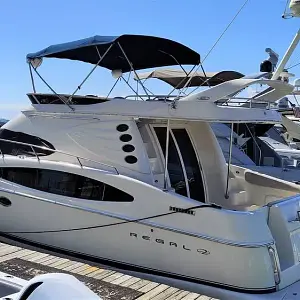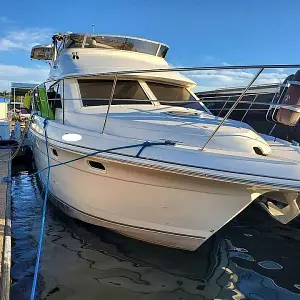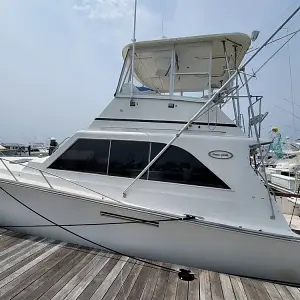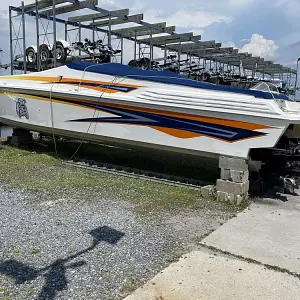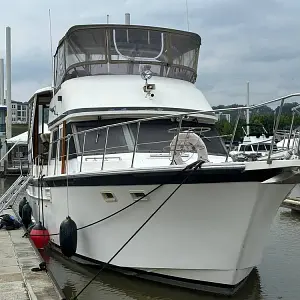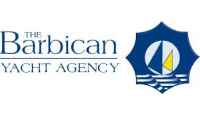A fresh (2010), steel-built liveaboard with shallow draught and optimised accommodation making the fullest possible use of the sort of volume that the old Scottish 'Clyde Puffers' achieved with their bluff bows and generous buttock lines, while offering a draft of only 3'10" (1.18m) and beam of 11'6" (3.5m).
Built to a design by Selway Fisher Designs Ltd.
A fresh (2010), steel-built liveaboard with shallow draught and optimised accommodation making the fullest possible use of the sort of volume that the old Scottish 'Clyde Puffers' achieved with their bluff bows and generous buttock lines, while offering a draft of only 3'10" (1.18m) and beam of 11'6" (3.5m).
Built to a design by Selway Fisher Designs Ltd. of Melksham 'LITTLE CHARLY' is described as a multi-chine motor barge for use in UK waters, crossing to Europe and exploring the canals and rivers of the European mainland.
'LITTLE CHARLY' has cruised the Western Isles and Northern Scotland, Ireland and then via the Continental canals and the Rhine to the Mediterranean and back through France. She cruises at 5-8 knots with engine speeds of up to 1800 revs and with a fuel capacity of 890 litres there is plenty range (probably in the order of about 1,800 nautical miles).
The hull is ballasted and the sails carried on the main mast used for increasing the fuel economy when running ahead of the wind, while the mizzen sets a steadying sail to also dampen movement when at anchor.
Accommodation
The majority of the accommodation space is located between the under-foredeck foc'sle and the engine space (this latter being under the wheelhouse and extending beneath the stern deck, but accessible through an independent deck hatch located immediately abaft the wheelhouse.
The accommodation offers three separate sleeping cabins, outside of the main 'Saloon' and galley, with a single heads compartment located just ahead of amidships and forward of the galley. Seating in the saloon is in the form of a fixed 'dinette' to starboard side. Its clear that the table could be made convertible relatively easily, to be able to offer an additional double berth if desired.
The finish maybe described as of 'Trawler-Style', with painted plywood of good scantlings, picked out by hardwood cappings and edgings, with surface fiddles of stainless steel and/or aluminium. The hull sides and deckheads have been insulated effectively (sprayed foam, behind plywood panel linings) and is dry and well ventilated by a mixture of opening portlights, overhead hatches and passive ventilators.
There is no dedicated heating system currently fitted but, cooking is by diesel-fired, conductive hob with positive air pressure passed through the cooking unit, with the spin-off benefit of background drying and warming of the accommodation's atmosphere, while flue gases are separated and directed outboard.
Forward Double Cabin:
This cabin features a full 6'6 double berth, offset to starboard and almost rectangular in plan, being measured as 4'2" wide at the head and 41" at the foot (at the forward bulkhead). The berth's mattress cushion is 'sprung' on laminated battens to provide for ventilation and comfort. Generous stowage beneath/within.
A 'Dressing Table' style of stowage/shelf unit is fitted to the port side with hanging lockers forward and aft - the forward one being of full hanging, while the aft one also accommodates a shelf above and below the hanging space. Beneath the fiddled surface of the dressing unit, further generous stowage is provided by a deep drawer and large caved stowage spaces.
Light and ventilation are provided by opening portlights by Lewmar to either coachroof side and a Lewmar deck hatch located toward the aft end of the cabin (with 6-rung access ladder), immediately to port of the centre-line. Artificial lighting takes the form of a single berth reading light and a centre-line mounted lamp with prismatic lens.
Heads Compartment:
Simply finished, but generous of space sums up this compartment well. There are two expansive, fiddled surfaces over big locker spaces - each with a fiddled shelf within and currently used to accommodate sensibly proportioned individual storage boxes. A single stainless steel hand-basin is fitted in the forward surface, with a hot and cold water mixer tap.
A 'Lavac' marine flushing toilet is manually operated and flushes overboard or into/through a stainless steel holding tank that is located beneath a fiddled shelf in the storage space beneath the hand basin.
Light and ventilation is provided by an opening portlight to the coach roof side.
Single Cabin to Starboard side:
Located opposite the heads compartment and provided with a full 6'6" long single berth (35" wide); this cabin is generously lit, with two of the opening portlights above the berth and has a half-height hanging cave, with a shelf stowage unit within it too.
The berth is sprung in common with the rest of the berths and offers enormous amounts of stowage beneath (albeit sharing the volume with two of the stainless steel water tanks.
Lighting is by single overhead, prismatic lensed lamp in addition to the portlights.
Galley:
This takes the form of an open U-shape, located to port and almost directly opposite the Saloon's dinette. A one and a 1/3rd stainless steel sink provides for washing up and drainage (with electrically and foot pumped water supply) at the forward return of the 'U', while the diesel heated hob and oven are set into the aft return.
Three large access trap doors close the storage spaces beneath the work surface, (which have fiddled shelves within), while convenient frequent-use crockery is provided for by plate and cup racks above and outboard of the sinks.
An overhead, opening hatch by Lewmar, combines with two opening portlights to ensure generous light and ventilation.
Cooking is by diesel heated hot-plate (Wallas 'Safeflame 85D' unit) and separate oven (Wallas 'Safeflame 86D'), drawing fuel from a dedicated and separate diesel fuel tank that is located beneath the port aft cabin's berth. Flue gases are carried to the coachroof deck through two shrouded flues that are fixed to the bulkhead between galley and the port aft cabin.
Main saloon seating/dinette:
A comfortable, four person dinette is provided to the starboard side of the saloon. 72" has been measured between the two backrests, suggesting that this could be made into a occasional 6' double berth if so desired. Currently, the table is securely fixed outboard and on to a single leg inboard. It is of good size (measuring 50x28" over the surface inside the fiddles), with fiddled stowage provision in the centre.
Voluminous stowage is offered beneath the forward bench seat, and that is supplemented with more toward the outboard end of the aft seat (the battery containment is within the inboard end of this bench seat), while the back rests and fiddled shelves above and behind the aft seat offer stowage for multiple smaller, 'convenience' items.
Single cabin to port, aft:
A further single-berthed cabin is located abaft the galley, immediately to port side of the companionway down from the wheelhouse. This features a single berth, taking opportunity of the space running aft - outboard of the helm's position (above, in the wheelhouse) and its associated cables and controls systems - together with a longitudinal space capable of providing useful half-height hanging stowage. The berth is sprung in the same way as the rest and therefore quite capable of providing a good night's sleep.
In common with the other sleeping areas, the cabin is provided with an opening portlight, ambient ventilator and overhead lighting - It also benefits in having the flues from the galley stove running through its overall volume!
Up to: The Wheelhouse:
The helm's wheel is positioned to the port side (with drop-opening window to the helm's left elbow), so a genuine pilot's berth is fitted to starboard, with its foot end enclosed beneath a half-size admiralty chart table that is set at standing height and faces outboard, in the starboard aft corner of the wheelhouse. The top end of the pilot's berth doubles as a 'snug' two-person settee seat, combining with a single squat seat to port and abaft the helm's dedicated seat for enclosed deck level panoramic seating from which the passing scene can be enjoyed by those not steering.
A top-opening fridge unit by Waeco is located beneath the port side's squat seat and this seat is immediately just inside the deck access door, making for a convenient, but protected standby station at which to spend a crew's deck watch.
Built of marine ply on a spruce framework and fitted with tongue and groove sheathing, the wheelhouse is provided with no less than twelve individual aluminium framed windows (including that fitted in the door), two of which feature drop-down sections to ensure ventilation and means of convenient communication with deck crew.
Mechanical And Electrical Systems
A Beta Marine BV3800-B90 marine diesel engine is installed within a dedicated, acoustically insulated engine box within the engine room/workshop beneath the wheelhouse sole. The engine drives a four-bladed propeller through a conventional stainless steel propeller shaft, with a dripless 'Sureseal' by Tidesmarine Ltd. fitted to the inboard end of the sterntube.
A 'Deluxe' instrument panel is fitted at the helm's position, with Voltmeter, Temperature gauge and Oil Pressure gauge readouts, together with audible warning and indicator lights to drawer the operator's attention to any issue.
Total engine hours are recorded as being 1447.5 (November 2022)
It is reported that the engine drives the vessel at speeds of between 5-8 knots (depending on sea conditions) at approx.1800 revs/min.
Electrical Systems
Two electrical systems were installed in compliance with the MCA requirements of the time: 24V DC for the engine and some 'Domestic Services' and a 12V DC system for the rest of the 'Domestic and Services' requirements.
Battery charging is from the engine-driven alternator, regulated by and directed through blocking diodes. Each battery bank is automatically isolated from the other.
There are also two separate P.V.(Solar) panel arrays - each mounted atop the wheelhouse for maintenance charging of the individual battery banks.
A Centaur 24/30 AC battery charger is fitted.
Each battery bank (located beneath the aft-most seat of the Saloon's dinette arrangement and immediately ahead of the bulkhead between engine space and the accommodation), comprise 2x130 A/hr gel-filled AGM batteries by Victron connected in series to provide 24V DC. A 'Battery Equaliser' allows the 24V DC to be split back to two 12V DC systems to serve individual, high-demand 12v DC items of equipment about the vessel.
Because of the vessel's steel construction, care has been taken to avoid electrical conductivity between either of the battery banks' positive or negative circuitry and the hull, with full isolation switching used.
A 220-240V AC input socket is provided with an isolation transformer to isolate the grounding system from any faulty shore support system, and AC domestic equipment can be powered from the 'Domestic and Services' battery bank via a Phoenix 24/1800 inverter.
Tankage
All tanks are of stainless steel and were constructed and tested by Jay Wolf Metalworking Ltd.
Fuel:Two tanks giving a total of 830 litres max capacity located behind the engine, plus a third [reserve tank] with 60 litre capacity, primarily used to supply the galley hob and oven.
Freshwater:Two individual tanks with a total 120 litres capacity between them.
Holding tank:Single 60 litre tank, located beneath the heads' compartment's handbasin.
Navigation Instrumentation And Equipment
- Clipper series echosounder for depth.
- Furuno GP-32 Navigator (giving SOG and CoG)
- Neco NT921 - Mk II autopilot to commercial spec.
- Icom MA-500 TR Class B, AIS transponder.
- Main compass (cost over £2000) is digital and establishes a heading by triangulating the relative position of satellites to avoid the magnetic deviation commonly experienced in steel hulls.
- Original, magnetic steering compass by 'Sestrel' retained as a back-up.
- Hand-bearing compass.
- Navtex for weather reports and Navigational warnings.
NOTE:
The Chronometer, Baromater and an Inclinometer seen in some of the pictures will not be included in the vessel's inventory of equipment.
Safety Equipment
- Icom IC-M508 VHF radio.
- Icom DS-100 DSC controller.
- 24V DC bilge pump with automatic and 'manual' switching.
- Manual bilge pump, operable from on deck.
- Manual bilge pump operable from within the engine space.
General note on any safety equipment:Any safety equipment such as life rafts, EPIRBs, fire extinguishers and flares etc. are usually personal to the current owner(s) and if being left on-board as part of the sale of a used vessel may require routine servicing, replacement, or changing to meet a new owners specific needs.
Spars And Sails
Both masts are constructed of of Sitka Spruce and are hollow and tapered to minimise their weight aloft and both are set within high cheeked tabernacles to enable them to be lowered when venturing inland and beneath bridges for instance.
The main mast is stayed with four shrouds running to within 5/6ths of the full height, while the mizzen mast is stayed to the masthead.
Both booms' fittings enable a single slab reef of the relevant sail, while the for'sail is simply hanked to the for'-stay in the traditional style; to be easily lowered to the deck when shortening sail.
Lazy jacks are provided and fitted to both the main and mizzen boom to assist in the control of the canvas when lowered onto the booms, with acrylic sail covers that incorporate cut-outs to accommodate the lazy jacks and thereby minimise chafe of the canvas work.
SAILS
- Mainsail in off-white polyester cloth.
- Mizzen sail.
- Jib.
All sails are by Westaway Sails of Ivybridge and are of the same age as the vessel herself.
Deck Equipment
- Stainless steel, self-stowing anchor roller at stemhead.
- Manual, double action windlass with chain and rope gypsies.
- 45kg 'Delta' anchor attached to xxxm of 12mm chain, with additional xx m of 22mm multiplait polyester rope spliced to the chain.
- Additional, 30lbs Danforth anchor and length of chain.
- Stern roller on the centreline to be able to deploy the secondary anchor from the stern as required.
- A single, pantograph-operated windscreen wiper.
- Twin electric horns.
- Deck flood light mounted on mizzen mast.
- 'At anchor' masthead light, mounted on main masthead.
- Two deck lockers of plywood construction mounted at stern.
- Numerous ropes of suitable size for mooring, together with suitable number of inflatable fenders for mooring purposes too.
- Steel stanchions carry polyester, three-strand lifelines, with a midship gateway to each side of the vessel to aid access from alongside.
History And Construction
Commissioned by her single owners from new, with hull construction by A-Fab Welding and Construction Services of Plymouth from a design by Selway Fisher Designs of Melksham, 'Little Charly' (the name is a colloquial nick-name for a fool) was completed in 2010.
A multi-chined hull form incorporates 10mm plate in the bottom of the keel and 6mm plate for the garboard plates. with 4mm plate used for the topsides. The frames are spaced at 0.5m intervals to either end of the hull (1m though the midship sections) with a view to being able to withstand ice when moored in high latitudes.
RCD Status:Our understanding is that this vessel is exempt from the EU Recreational Craft Directive (CE-marking) as her construction was categorised as ‘home built’ and she was not placed on the open market within the first 5yrs following commissioning.
